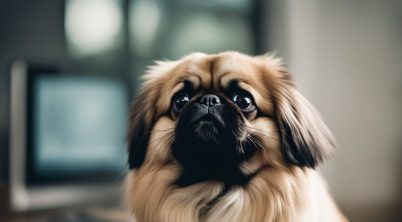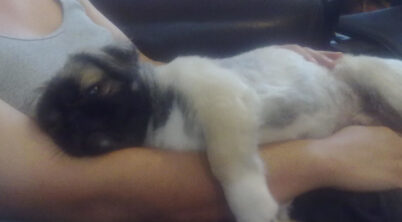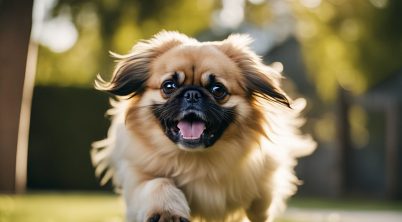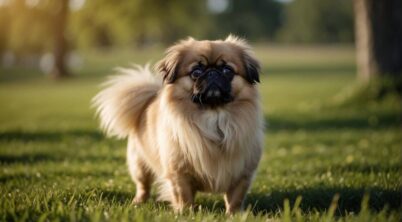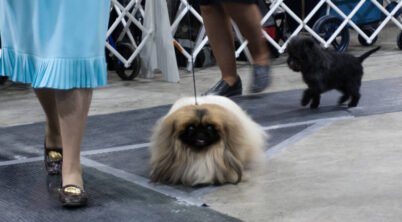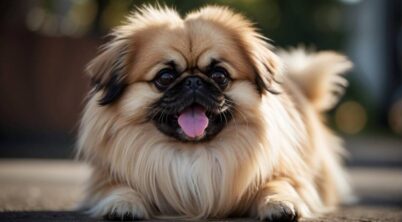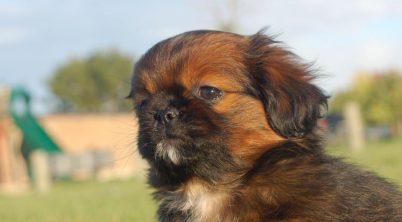The Pekingese dog breed, known for its distinctive lion-like mane and regal composure, is sometimes discussed in terms of its bite force. While they may appear fluffy and innocuous, like all dogs, they are equipped with a set of teeth and the ability to bite. However, the bite force of a Pekingese is significantly less powerful when compared to many other dog breeds, typically measuring below 200 pounds per square inch (PSI). This places them among the breeds with a relatively weak bite force, in contrast to larger and more robust working dogs.
The measure of a bite force, especially in a breed such as the Pekingese, may not be indicative of its potential to cause harm. While the Pekingese’s bite might not exert the level of pressure seen in high PSI dog breeds, it can nonetheless lead to discomfort or injury, particularly if the bite results from fear or aggression. It is also essential to consider the context in which a dog might bite, including the dog’s emotional state and the circumstances leading to the behavior.
Characteristics of an individual Pekingese, such as health, temperament, and training, play a significant role in its biting behavior. They are typically companion dogs with a gentle nature when well-socialized, but any dog may bite if provoked or feeling threatened. Owners must ensure proper training and socialization to manage their dogs’ behavior effectively, regardless of the breed’s bite force potential.
Table of Contents
Understanding Pekingese Bite Force
The Pekingese breed, known for its lion-like appearance and gentle demeanor, has a bite force considered modest compared to many other breeds. This bite force is measured in pounds per square inch (psi) and is a reflection of the potential pressure a bite could exert.
Comparing Bite Force Among Dog Breeds
Among dog breeds, the Pekingese has a notably lower bite force. While larger breeds such as the Kangal can exert a bite force of up to 743 psi, the Pekingese bite force usually registers between 100-200 psi. This is significantly less than many other breeds, placing them among the dogs with a relatively weak bite force.
- Kangal Dog: 743 psi
- Pekingese: 100-200 psi
Factors Influencing Bite Force in Pekingese
Several factors influence the Pekingese’s bite force, including:
- Bite Inhibition: This refers to a dog’s ability to control the strength of its bite. Pekingese puppies learn bite inhibition from their littermates and from the reactions of their owners.
- Muzzle: The structure of the Pekingese muzzle, being short and flat, affects the mechanics of the bite and consequently its force.
- Pain and Discomfort: The intention behind a bite can influence its force. If a Pekingese bites out of fear or aggression, it can cause more pain and discomfort due to a more forceful bite.
For owners, it’s crucial to understand their Pekingese’s bites to ensure safety for both the dog and the people around it.
Training and Socialization
Training and socialization are pivotal in shaping well-behaved Pekingese, capable of integrating into various social scenarios without resorting to biting.
Effective Training Techniques
Effective training of a Pekingese relies on reward-based training, utilizing positive reinforcement to encourage good behavior. A Pekingese may respond well to the following approaches:
- Bite Inhibition: Teaching a Pekingese to control the force of its bite is vital, especially when interacting with children or strangers.
- Consistency: Repetition of commands in training sessions enhances learning and obedience.
- Respect and Patience: These dogs may exhibit an independent streak, thus respecting their personality while maintaining a patient training approach is important.
Pekingese and Their Socialization Needs
Proper socialization for Pekingese puppies should include:
- Exposure: Introducing puppies to different environments, people, and stimuli to develop a well-adjusted dog.
- Reward: Offering a reward when they display non-aggressive behavior towards strangers or children reinforces desirable conduct.
- Continual Socialization: Maintaining regular socialization through a Pekingese’s life prevents the development of unwanted behaviors.
Consistently applying these practices not only curbs biting tendencies but also establishes a foundation for a sociable and well-mannered companion.
Healthcare and Maintenance
The health and maintenance of a Pekingese require a dedicated grooming regimen, a balanced diet with proper exercise, and regular veterinary care to ensure its well-being.
Grooming and Coat Care
The luxurious coat of a Pekingese demands regular grooming to maintain its condition and prevent matting. Brushing should occur several times a week with a sturdy bristle brush to remove loose fur and distribute natural oils. Due to their dense undercoat, they are prone to overheating; thus, airflow around the skin is crucial, which can be promoted through proper grooming. Additionally, their eyes and face require daily cleaning to prevent infection.
- Frequency: Multiple times per week
- Tools: Bristle brush, comb, and grooming scissors
- Focus: Prevent matting and ensure proper airflow
Diet, Exercise Needs, and Veterinary Care
Pekingese possess a moderate energy level and require daily exercise which can be achieved through walks and playtime. Their exercise needs can typically be met with two 15- to 20-minute walks daily, paired with engaging play periods. This breed’s diet should be rich in protein, and portion control is essential to prevent obesity. Regular veterinary check-ups are vital to monitor their health; particularly as they are sensitive to anesthesia and heat. Owners should ensure their Pekingese have a balanced diet and controlled exercise regimen for optimal health.
- Diet: Protein-rich, with fruits and vegetables
- Exercise: Short daily walks and play sessions
- Veterinary Care: Regular check-ups, eye and knee tests recommended
* Banner photo by Yoshi Huang, cropped | Some rights reserved

